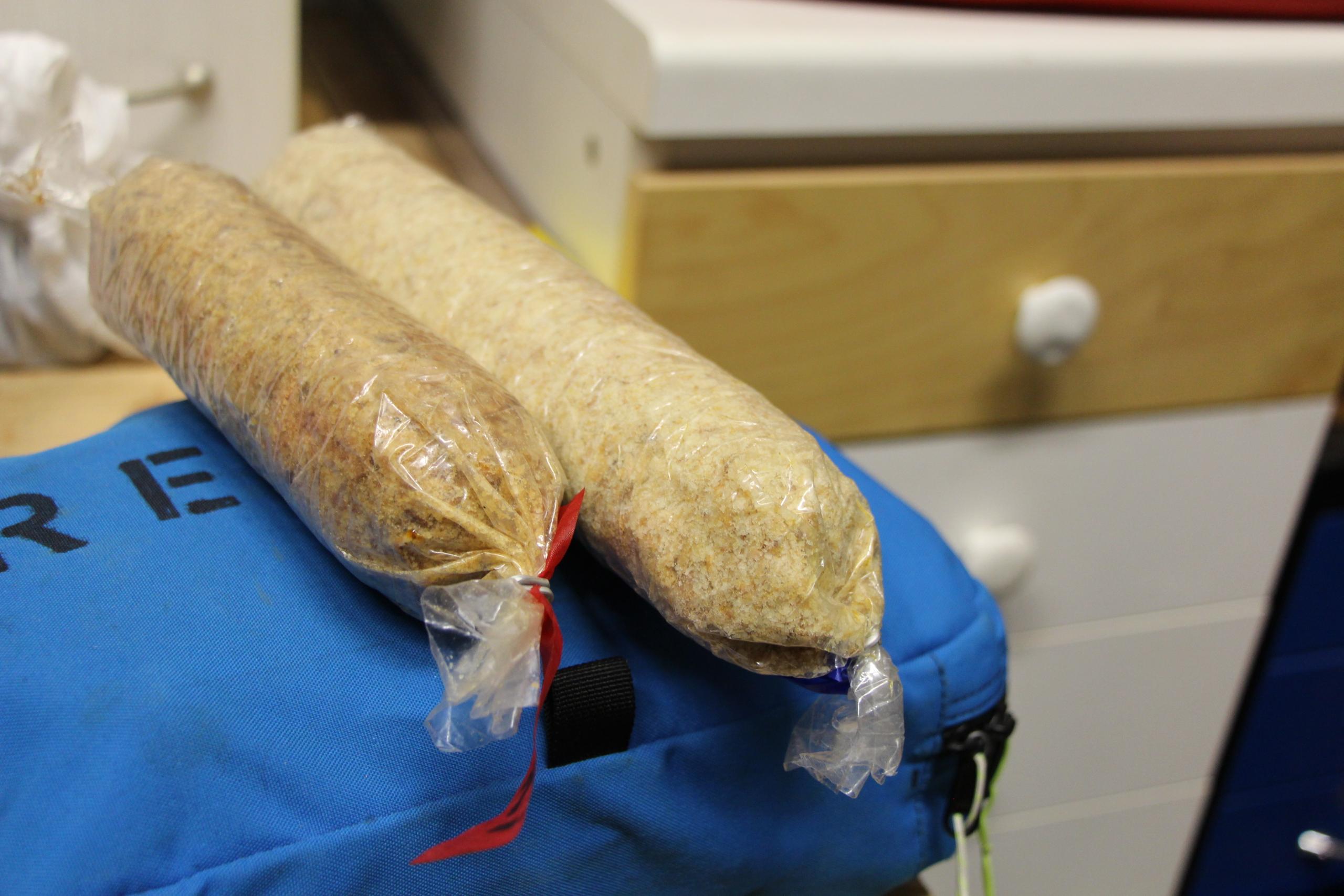
Day-to-day business in the Arctic

Packing the right gear and food is of the utmost importance in a solo expedition across the Arctic. Thomas Ulrich and his team create small sausage-shaped plastic pouches that contain the equivalent to a meal.
“Breakfast is porridge with oats, nuts, dried fruit, milk powder and sugar” says Ulrich. “You heat it up in the morning. During the day it’s pretty similar but you eat it dry with dried meat, and then chocolate.”
He alternates between olive oil and melted butter in his meals for variety and to keep up his body fat. All in all he’ll consume almost 20kg of oats and 14 litres of olive oil.
Dinner is mashed potato with a different dried meat, cooked using a stove fixed to a carbon plate, so it can start heating up while he’s setting up his tent for the night. The fuel he uses to melt the snow with which he’ll cook is one of the heaviest items he carries.
By the end of the trip he’ll be eating 6500 calories on a daily basis.
He also eats 200g of milk chocolate per day, taking it out of its normal packaging and putting it in a plastic bag before he sets off. “The next day I use the bag as a vapour barrier on my feet,” he explains matter-of-factly.
At the start of the trip he’ll consume fewer calories than at the end as he’ll gain extra body fat before the expedition and slowly lose it as he goes along.
Aside from eating, there’s a lot of walking to be done – on average nine hours a day. He gives himself two hours to get ready in the morning, packing up his gear, eating and setting off in the right direction.
When he has to cross channels of water, he climbs inside a special swimsuit – like a large pair of waterproof overalls. “There’s more and more open water on the Arctic ocean due to global warming,” says Ulrich.
“You go in with all your clothes on [inside the swimsuit]. Sometimes I even like to go in and swim, the water is minus 3 degrees, and out of the water it’s minus 25, so the water’s kind of warm.”
He uses GPS in the evening, the morning and at intervals throughout the day, to see how far he has drifted and check he is on the right track. Navigation otherwise is an imprecise science in this situation, Ulrich describes using everything from the sun to “a feeling, experience, your heart”, when it comes to going left or right, some of the regular choices he has to make while traversing a landscape of snow and ice.

In compliance with the JTI standards
More: SWI swissinfo.ch certified by the Journalism Trust Initiative





























You can find an overview of ongoing debates with our journalists here . Please join us!
If you want to start a conversation about a topic raised in this article or want to report factual errors, email us at english@swissinfo.ch.